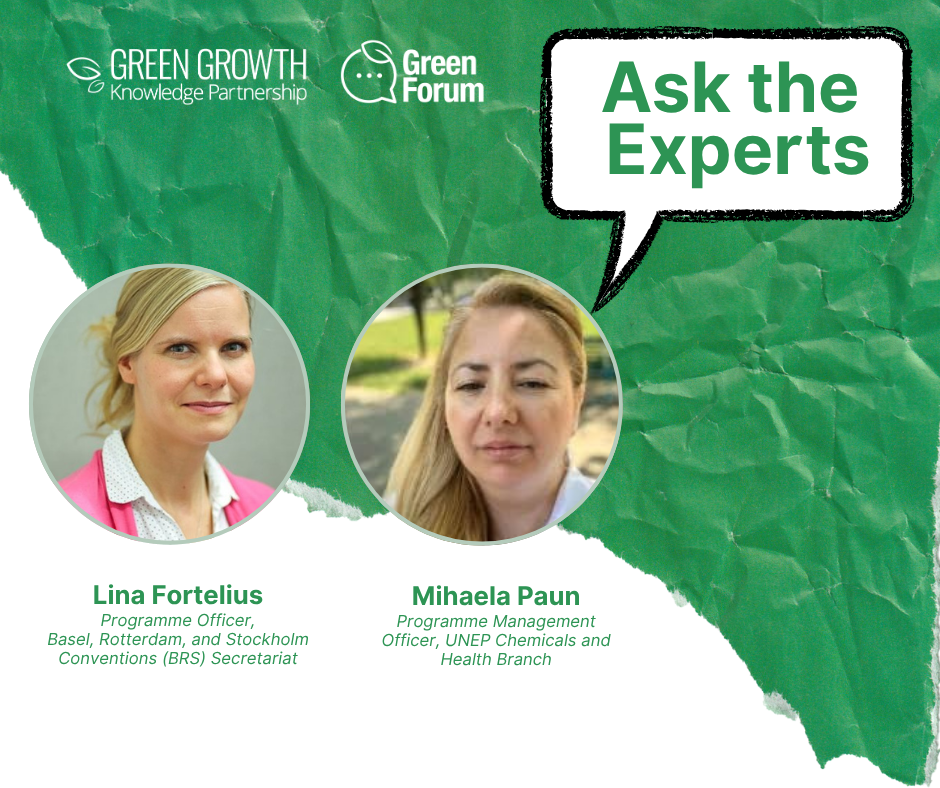Climate change, biodiversity loss, and pollution are endangering the health of people and the planet. No one is immune. The newest reports on the triple planetary crisis, paint a troubling picture. Climate change is already impacting every corner of the world and increasing levels of ill health, including the rise in chronic conditions such as heart disease, stroke, lung cancer and respiratory diseases.[i] The World Health Organization (WHO) estimates that nearly 14 million people die each year from environmental health risks, including 8 million from air pollution alone.[ii], [iii] Biodiversity, which is critically important to delivering essential services such as food and nutrients, medicines, and medicinal compounds, is declining globally, faster than at any other time in human history.[iv]
We are at a crossroads. If we are to build a healthy and sustainable future for all, we must take meaningful action now.

Following the science
Through our flagship Ambition Zero Carbon programme, we are on track to reduce greenhouse gas emissions from our global operations (Scope 1 and 2) by 98% by 2026 and halve our entire value chain footprint by 2030, on the way to a 90% reduction by 2045.
As a science-based company, we have aligned our climate strategy with the latest science. Our emission reduction targets have been verified by the Science Based Targets initiative (SBTi) and we were one of the first seven companies worldwide to have our net zero, science-based Scope 1-3 targets verified under their new Net-Zero Corporate Standard.
Building sustainable value chains through partnership
Approximately 4% of global greenhouse gas (GHG) emissions come from the healthcare sector, from pharmaceutical manufacturing to hospitals. As a country, this is equivalent to the healthcare sector being the fifth largest emitter on the planet.[v] We recognise that as a sector we must do more to limit global temperature increases to <1.5°C. But we cannot address the climate challenge on our own. Our Scope 3 footprint, covering all indirect emissions across our value chain, is more than 20 times greater than our Scope 1 and 2 footprints.
This means that to achieve our ambitions, we must work together with our suppliers and partners to accelerate sector-wide decarbonisation through verified emissions reduction plans. Our aim is for 95% of our key suppliers and partners by spend to have science-based targets by the end of 2025.
To help our suppliers in their transition to net zero, we are working with our peers to increase access to renewable energy. Borne out of a shared objective in meeting climate goals and improving health outcomes by reducing emissions, Energize is a collaboration between Schneider Electric and 10 global pharmaceutical companies to facilitate access to renewable power at scale for our suppliers. The partnership will help healthcare suppliers address their Scope 2 emissions, thereby enabling us to reduce our Scope 3 emissions.
We are further addressing our Scope 3 footprint by partnering with Honeywell to reduce the emissions associated with the use of our respiratory medicines. The collaboration will develop next-generation pressurised metered-dose inhalers (pMDI), using a propellant which has a near zero Global Warming Potential (GWP). This is an important innovation given the clinical need for pMDIs and their climate impact – existing pMDIs contain small quantities of a greenhouse gas (GHG) to help propel the medicine into the lungs of patients with respiratory diseases like asthma.
Convening global health leaders to accelerate action on climate
Collaboration is also at the heart of the Sustainable Markets Initiative (SMI) Health Systems Taskforce. Bringing together leaders from global biopharmaceuticals companies, international institutions, healthcare systems, academia and policymakers, members of the Taskforce are developing a collective roadmap to accelerate the delivery of a net zero, sustainable health system.
Championed by our Chief Executive Officer, Pascal Soriot, the focus of the SMI Health Systems Taskforce is threefold: decarbonising supply chains, reducing the footprint of patient care pathways and accelerating digital innovation.
Investing in nature and biodiversity
Beyond the delivery of net zero healthcare, we have a collective responsibility to protect, sustainably manage and restore ecosystems that support a healthy and resilient society. That is why we’re investing in biodiversity and nature-based solutions through our AZ Forest programme. Working in partnership with local governments and non-profit organisations, we have committed to plant over 50 million trees by the end of 2025 and ensure their longer-term survival. Reforestation brings many co-benefits, including developing more sustainable livelihoods, fostering biodiversity, and building climate resilience.
Creating more resilient and collaborative health systems
Even before the strain of COVID-19 on health systems, many countries were already facing the pressures of a rise in non-communicable diseases. Compounding these pressures, the global healthcare workforce is declining, while investments in preventative care have been curtailed. The pandemic tested health systems to, and beyond their limits. But it also taught us how critically important it is to work together to achieve change – across governments, business, academia, civil society, and beyond.
In 2020, AstraZeneca, the Word Economic Forum, and London School of Economics partnered to create the Partnership for Health System Sustainability and Resilience (PHSSR), which helps countries strengthen their healthcare systems. Now joined by other partners including Philips, KPMG and Apollo Hospitals, the Partnership establishes a framework against which resilience is measured and offers an opportunity for a rigorous analysis of our health systems. PHSSR measures health systems across seven key domains – financing, governance, workforce, medicines and technology, service delivery, population health, and environmental sustainability, in order to identify strengths, potential weaknesses, opportunities and risks.
Over the last two years, the work of the Partnership has shown how health systems are adapting and innovating to meet patients’ needs. This includes remote digital treatment solutions, online patient consultations, and running remote clinical trials.
Stockholm+50: A Healthy Planet for the Prosperity of All – Our Responsibility, Our Opportunity
Our future depends on healthy people, a healthy society, and a healthy planet. While the relationship between these interconnected elements is complex, we must increase our efforts to limit the impacts the climate emergency, the loss of biodiversity, and pollution, which all threaten public health and the environment.
At the beginning of June, representatives from around the world will gather in Stockholm for Stockholm+50, to commemorate the 1972 United Nations Conference on the Human Environment and celebrate 50 years of global environmental action. Designed as platform for stakeholders to collaborate and share expertise, Stockholm +50 could usher in a boost to environmental awareness and action for the next half-century, just as it did five decades ago.
By taking bold action – together and without delay, we can shape a resilient, sustainable, and healthy future for people and the planet.
References
[i] Romanello M., McGushin A., Di Napoli C., Drummond P., Hughes N., Jamart L., et al. ‘The 2021 report of the Lancet Countdown on health and climate change: code red for a healthy future’, The Lancet, 398 (10311), pp. 1619-1662. Available at: doi: https://doi.org/10.1016/S0140-6736(21)01787-6
[ii] World Health Organization (2022) Environmental health. https://www.who.int/health-topics/environmental-health#tab=tab_1 (Accessed: 18 May 2022)
[iii] World Health Organization (2022) Air pollution. Available at: https://www.who.int/health-topics/air-pollution#tab=tab_1 (Accessed: 18 May 2022)
[iv] WWF (2020) Living Planet Report 2020. Available at: https://livingplanet.panda.org/en-us/ (Accessed: 18 May 2022)
[v] Health Care Without Harm (2019). ‘How the Health Sector Contributes to the Global Climate Crisis and Opportunities for Action’. Available at: https://noharm-global.org/sites/default/files/documents-files/5961/HealthCaresClimateFootprint_092319.pdf (Accessed: 18 May 20220)



